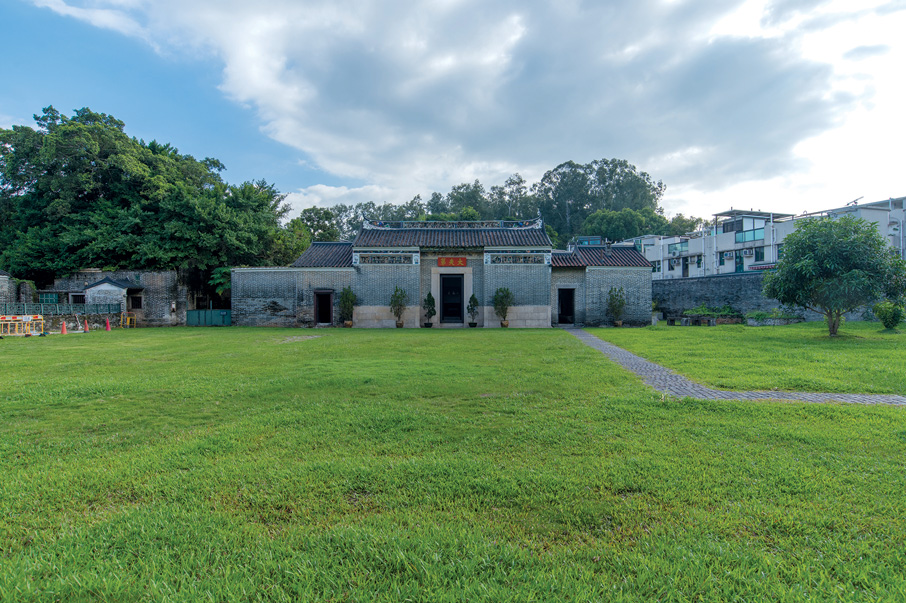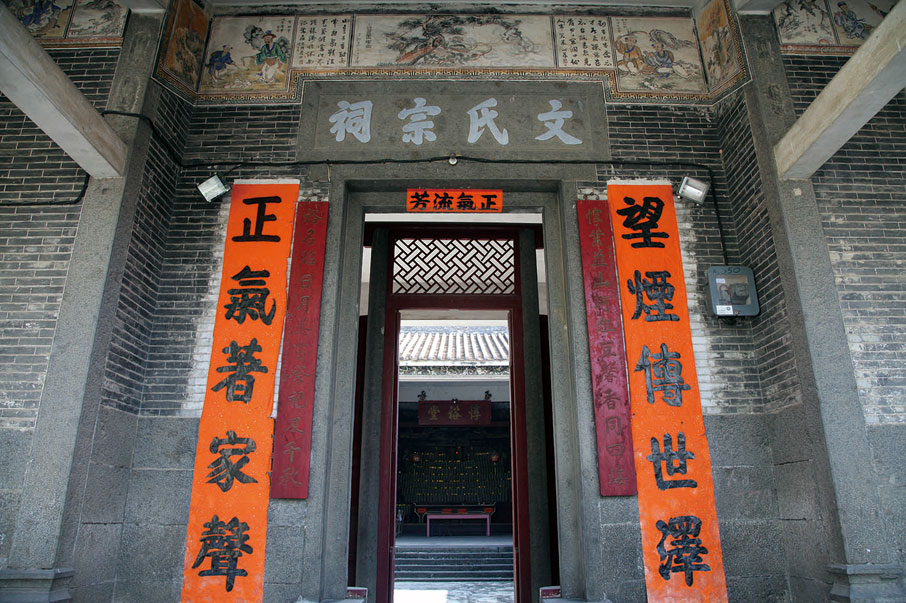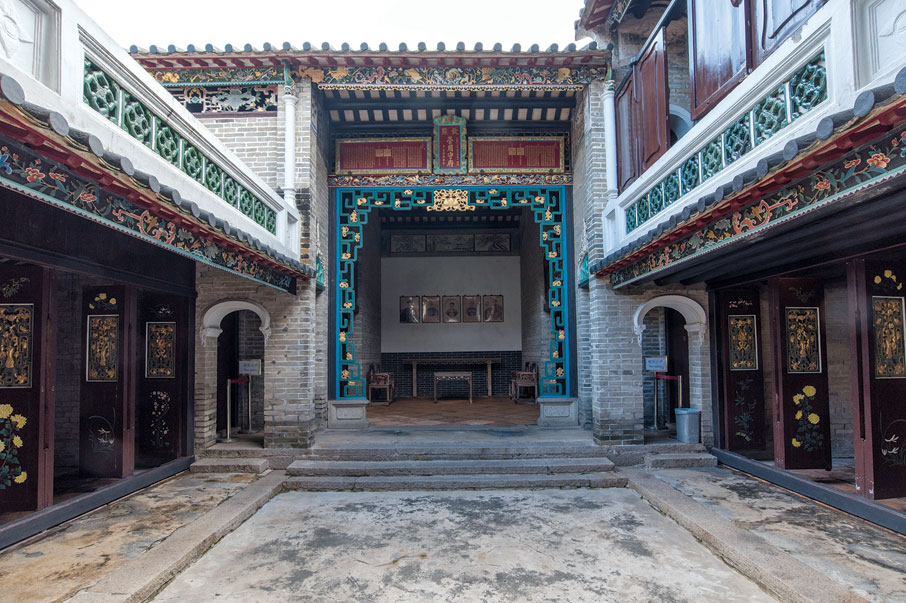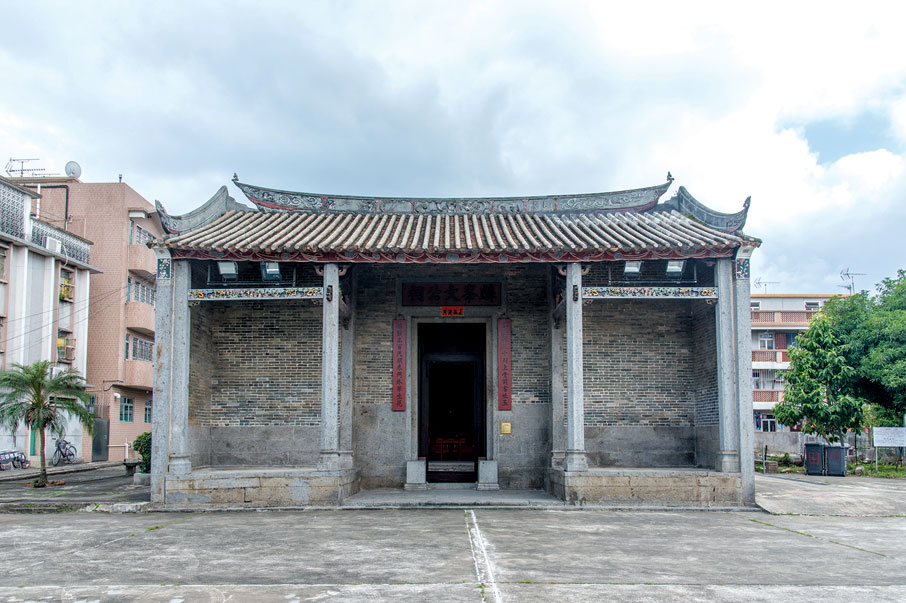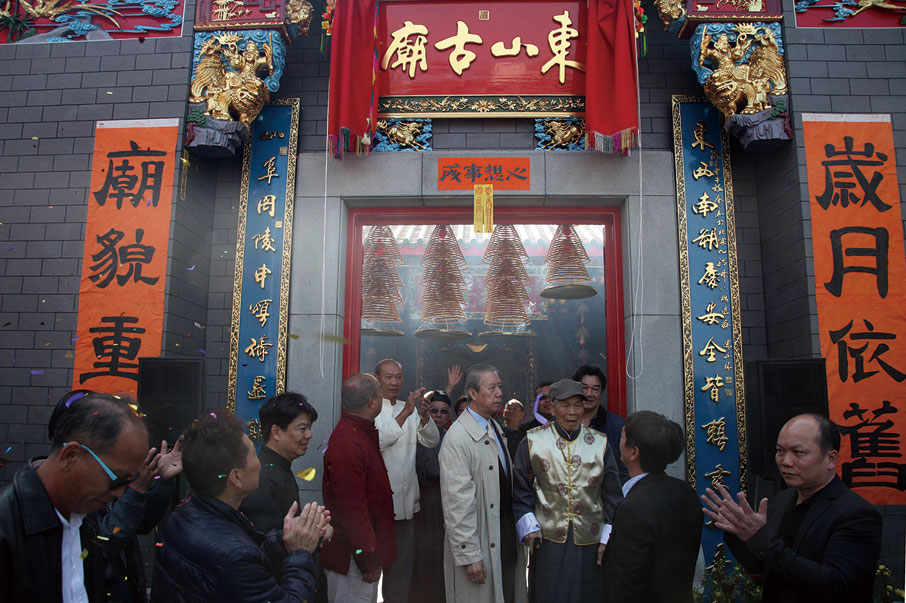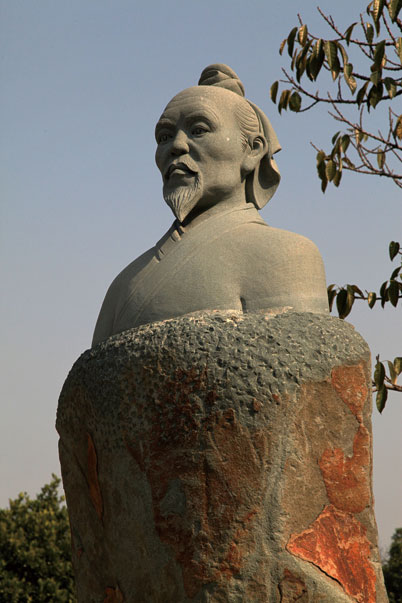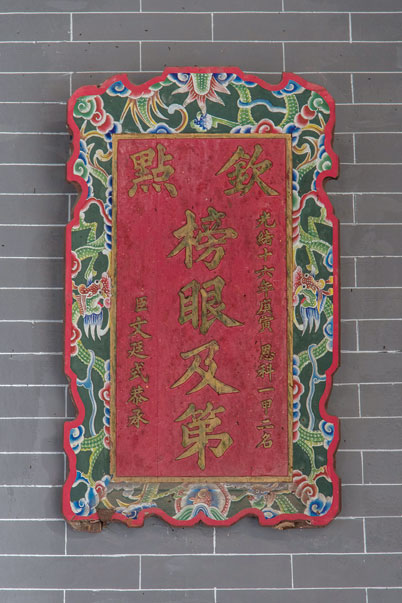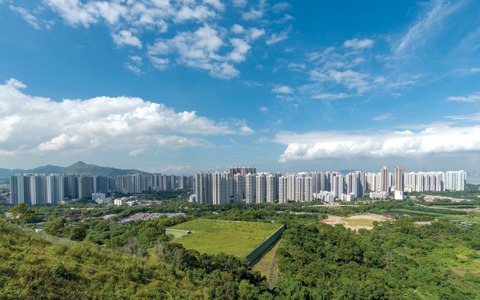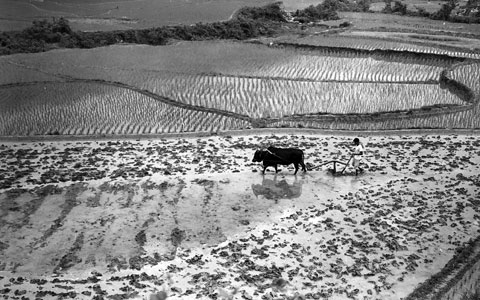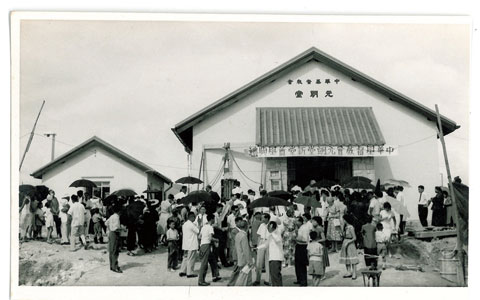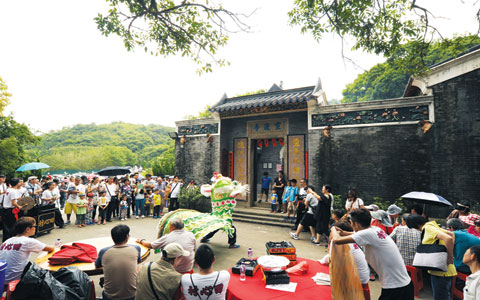Text | Chan Tin Kuen
Photo | Hulu Culture
Hong Kong clansmen enjoying the strongest claim to royal lineage is the Tang clan with their ancestor marrying Wong Koo (a Southern Song princess). Then, there was our anti-Yuan hero Man Tin Cheung (1236 to 1283, also known as Man Shan). When he was captured and kept in custody on an enemy battleship in the Pearl River estuary outside Ling Ding Ocean in the 2nd year of Xiangxing Reign (1279), the Yuan Mongol Army forced him to write letters to persuade the Generals Zhang Shi Jie and Lu Xiu Fu to surrender. He did not succumb. Instead, he wrote the famous poem "Crossing the Ling Ding Ocean”, leaving behind a most touching and timeless saying, "Since time began, who never dies? Your fervent heart in history - Forever shines!”
Man clan is one of the five major clans in the New Territories. Since the beginning of the Yuan Dynasty, Man Tin Cheung’s descendants had settled here and over the years have branched from San Tin in Yuen Long to Tai Hang in Taipo. Just over a decade ago, the clansmen built Man Tin Cheung Park and Man Shan Park. “Man Tin Cheung’s Descendants” is projected as their proud identity. In the lineage, actually Man Tin Cheung was not an immediate ancestor of the Man clan in the New Territories. His younger cousin Man Tin Shui (1240-1298, also named Man Tung Shan) was in fact the ancestor of the Man clan in the Guangdong region.
The Man Ancestral Hall in San Tin
Man Ancestral Halls are built in both San Tin Fan Tin Tsuen and Tai Hang Heung. On the couplet at the gate it is written "Righteousness Boosts Family Fame”, which commemorates Man Tin Cheung and the “Righteous Elegy" written by him during his imprisonment in the Yuan prison.
The Man Ancestral Hall in San Tin is also known as "Tun Yue Tong" (Grade I Historic Building). It was built in the 9th year of Zhengtong Reign (1444) of the Ming Dynasty, which was also the same era when Man Sai Ko, the seventh generation ancestor, started settling in San Tin. The reconstruction happened during mid-18th century. It is a two-hall-three-bay structure. The Man ancestors are enshrined in the Main Hall. At the top of the shrine there are two huge tablets carved with dragon head and patterns placed in the centre, with Man Tin Cheung on the left and Man Chung Chai (the grandfather of Man Tin Cheung and Man Tin Shui) on the right. The tablet for Man Tin Shui, is placed aside.
Man Sai Ko had six sons. The eldest son had no heir, while two others moved away. The remaining three stayed in San Tin. Their descendants are now residing in three walled villages (Yan Sau Wai, Tung Chun Wai and Shek Wu Wai) and six villages (On Lung Tsuen, Wing Ping Tsuen, Fan Tin Tsuen, San Lung Tsuen, Tsing Lung Tsuen and Chau Tau Tsuen). The earliest settlement was in Yan Sau Wai. Today we can still find the remnants of the Qing Dynasty watchtower and wall. On the top of the entrance gate, a pink stone with four Chinese characters "Yan Sau Ping Hong" is inscribed, meaning “Benevolence, Longevity, Peace, Healthy”.
Afterwards the clansmen built ancestral halls in San Tin to enshrine their ancestors. One of them is the Man Lun Fung Ancestral Hall which has adopted a “three-hall structure with two internal courtyards” design. It is the largest ancestral hall in San Tin and is now a Declared Monument. Legend said that it was built in the mid-17th century to commemorate Fut Po, the second son of Man Sai Ko. Man Fut Po was also named "Lun Fung" and "To Shu" to signify "Treasure Books in Jade from the Unicorn’s Breath”. At the door of the front hall, there is a horizontal plaque inscribed with "To Shu Tong", which was calligraphed by Song Xiang, the First Scholar of Lingnan, in Jiaqing Bingyin Year (1806). That was most likely the year when the Ancestral Hall was rebuilt.
The ancestral halls in Fan Tin Tsuen are called Ming Yuen Hall (Grade II historic Building), Man San Ye Ancestral Hall (Grade II historic Building) and Man Wing Sau Ancestral Hall (also known as Ming Tak Tong). Man San Ye Ancestral Hall is also known as “Lok To Tong”. It was built in the mid-18th century to commemorate Man San Ye (also called Man Wing Shui), the heir of Man Sai Ko. It sits right next to the Man Ancestral Hall, occupying approximately the same size. This indicates that the family had earned quite a reputation at the time. Man Wing Sau Ancestral Hall commemorates Man Wing Sau, the elder brother of Man San Ye. It was first built in 1811 and reconstruction took place in 1973. Similar to the Man Lun Fung Ancestral Hall, a horizontal plaque that reads “Bangyan Jidi” is hanged, which commemorates Man Ting Sik, the Jiangxi Scholar, who attended the Imperial Civil Service Examinations in the 16th year of Guangxu Reign (1890) and attained the second place.
The gorgeous Tai Fu Tai Mansion
Adjacent to Fan Tin Tsuen, the gorgeous Tai Fu Tai Mansion in Wing Ping Tsuen was built by Man Chung Luen, the twenty-first generation ancestor, in the 4th year of Tongzhi Reign (1865). He was a shrewd businessman and a philanthropist, so he was awarded the title of “Tai Fu” (meaning High Official). That was the reason why he could build a mansion instead of just a common house. The main ridge and the top of the walls are decorated with ceramic figurines manufactured at the famous Wenrubi kiln at Shiwan, which is unique in Hong Kong.
The mansion is a two-hall-three-bay architecture. Viewed from the main hall entrance are two honorific boards bestowed on the parents and the grandparents of Man Chung Luen by Emperor Guangxu in 1875. They are engraved in both Han and Manchu characters, which are the only known examples of their kind in Hong Kong. In between there is a vertical tablet inscribed by Wen Zhuoxun, who became a Palace Graduate (Jinshi) in the 12th year of Guangxu Reign (1886) and was appointed Military Supplies Shoufu by the Court.
Plaster mouldings, wood carvings and murals can be found everywhere inside the house. The doors are engraved with the patterns of plum blossoms, orchids, chrysanthemums and bamboos. The eaves boards around the courtyard have exquisite auspicious images of bats (Blessing) and deer (Prosperity). There is also a ticking western clock which symbolizes “Longevity”. However, the most unique is the painted glass panes and the Rococo-style flowers and leaves plaster mouldings above the entrances, which express the owner’s love of the western interior décor.
Before being declared as a monument, Tai Fu Tai had been rented out for a long time to a few families from outside. Both the exterior and interior of the premises had stains everywhere. The decorations were in disrepair. Even the square in the front of the mansion was piled up with garbage. In consultation with the owner, the Antiquities and Monuments Office offered to swap a piece of land adjacent to the building in 1987 for the restoration of the heritage. The project was funded by the Hong Kong Jockey Club. After restoration, the mansion resumes its former glory.
Tung Shan Temple and Man Tin Shui
There is also a temple in Wing Ping Tsuen which is dedicated to Tin Hau. It was said to be erected during the era of Man Sai Ko for the protection of the villagers. It was later renamed as "Tung Shan Temple" (Grade III Historic Building) to commemorate Man Tin Shui (also named Tung Shan). In recent years, this two-hall building had the problems of damaged wood beams and water seepage around the corners of the base. After being restored in 2013, it is now proudly projecting a fresh new outlook.
Being the first ancestor of the Man clan in Guangdong, Man Tin Shui, however, was not as famous as Man Tin Cheung. Some clansmen think that they should pay more attention to him. Hence, in 2013, they erected his bust at an open space between Tung Chun Wai and On Lung Tsuen in San Tin. The bust is in Song Dynasty costume but sculpted in modern eclectic style. A detail genealogical record is engraved on the pedestal to show how the current clansmen in San Tin are descended from Man Tin Shui.
